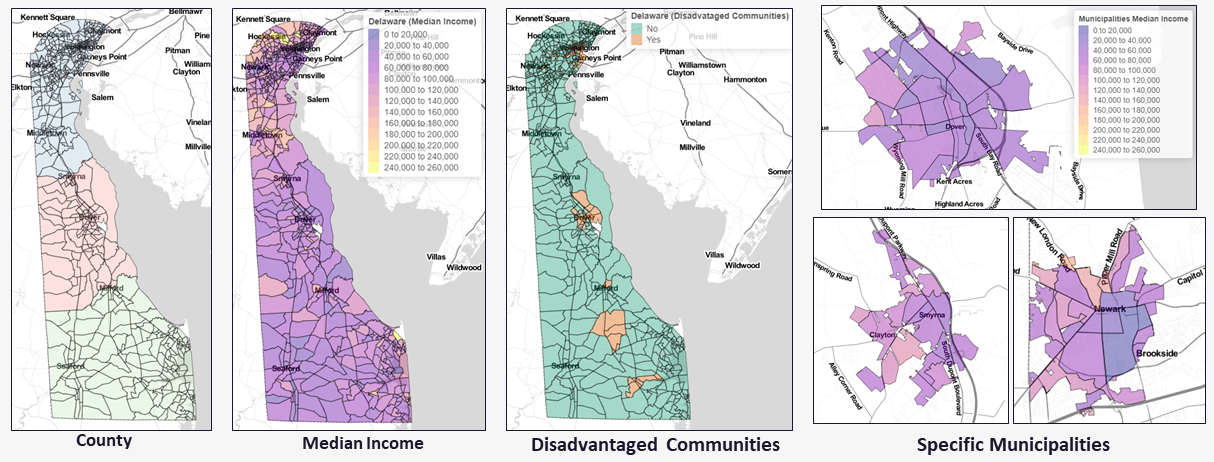How AEG helped DNREC better understand residential household characteristics and energy consumption to inform IRA program opportunities and implementation
AEG completed a Residential Market Characterization for the Delaware Department of Natural Resources and Environmental Control (DNREC). This study provided information and interactive deliverables to help DNREC identify opportunities to effectively deliver Inflation Reduction Act Home Energy (HOMES) and High-Efficiency Electric Home Rebate (HEEHR) Programs. The results of this study were presented to the Delaware Governor’s Energy Advisory Council Energy Efficiency & Electrification Workgroup.
The HOMES and HEEHR programs will incentivize residential building envelope, HVAC/Heat Pumps, whole home energy savings, and building electrification measures. With even the smallest states receiving upwards of $60M in funding (and in some cases upwards of $600M) for these two important programs, it is important for states to understand their constituent base, their geographic and sociographic targets, and the feasibility of distributing these rebates within the seven-year program lifetime.
To complete this study, AEG’s Market Assessment team combined publicly available national, regional, and state-specific data sources to provide the most accurate view of Delaware households possible.
Residential households were characterized by:
- Dwelling type (e.g., single-family vs. multifamily housing)
- Income level
- Average annual electric consumption
- Saturation and fuel share of energy-consuming equipment
- Disadvantaged community designations
This information was used to develop a snapshot of Delaware’s residential sector, built on a flexible framework that can be updated and expanded over time as DNREC’s needs evolve. Within the presentation, you can see the key data sources, a snapshot of state-level results, heating & cooling technology saturations throughout Delaware, additional technology saturations, and the mapping output.
What defines a Disadvantaged Community?
The DOE recognizes a disadvantaged community by census tracts identified by the White House Climate and Economic Justice Screening Tool (CEJST). The CEJST tool was designed to be inclusive of many indicators relevant to multiple federal agencies, and thus identifies a broad number of census tracts across the United States as disadvantaged communities.
Accordingly, DOE funding recipients can use the DOE DAC score to better understand the burdens experienced by census tracts identified in the CEJST tool. For example, a funding recipient implementing an energy efficiency program may be interested in understanding what CEJST census tracts in their area experience the highest energy burden.
Interactive Maps
One of the most exciting features of this study is the mapping outputs. AEG used shapefiles and census block group-level data to create interactive maps to display data geospatially.
For each census block group in Delaware, the maps display:
- Household counts
- Distribution of building types
- Median household income
- Disadvantaged community designations
- Layers by county and municipality
Mapping Output
Mapping Examples

Planning, Application, and Launch Support with AEG
AEG can quickly perform this analysis for your state so you can quantifiably justify applying for these funds, inform your program design, and optimize the effectiveness of the programs you deliver to your constituents.
Looking to learn more about AEG services or solutions?
Talk with one of our experts today.
